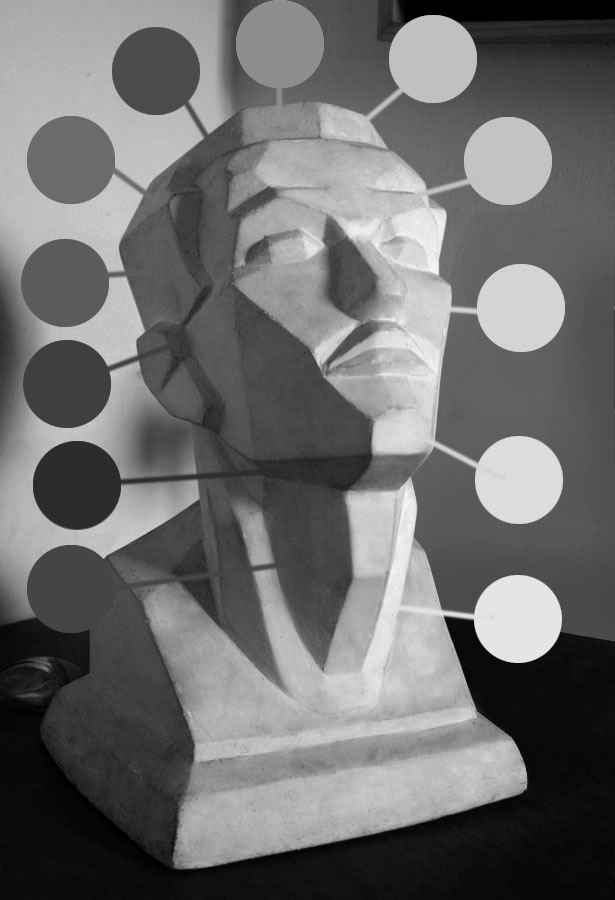When we observe the world around us, we see an abundance of colors, shadows, highlights, and reflections. As painters, our goal is to capture reality and translate it onto a flat, opaque surface—our canvas—using colored pigments. To successfully recreate reality, we must master three fundamental elements: drawing, volume, and color.
- Drawing allows us to represent objects proportionally and realistically.
- Volume creates the illusion of three-dimensionality.
- Color brings life to the painting.
While drawing is crucial, today’s focus is on volume.
Training Your Eye to See Tonal Values
To develop an understanding of volume, we must train our eyes to recognize tonal values—the different shades of light and dark that define forms. The best way to do this is by starting with white objects, as they contain no color and only reflect a range of grays.
By painting white objects, we eliminate the distraction of color and concentrate solely on accurately reproducing the gradations of light and shadow. Once we become comfortable with this process, we can transition to color, which requires a deep understanding of theory and practice. If we don’t first master values, we cannot expect good results when working with color.
The Importance of Patience in Learning
From my own experience, I know that most art students want immediate results. We all want to see our paintings come to life quickly, but the reality is that painting requires time, practice, and patience.
A great way to start is by setting up a simple still life using a white cloth and a few geometric shapes painted white. If this isn’t possible, look for black-and-white photographs with strong lighting contrast—avoid frontal lighting, as it flattens forms. Instead, choose images where you can clearly see the transition from light to shadow and the full range of tonal values.
By consistently practicing with white objects, we will train our eyes and hands to achieve the correct sense of volume. Then, when we introduce color, we won’t lose our sense of form.
Getting Started: The Value Scale

To begin, you’ll only need black and white paint. Start by creating a value scale of at least six tones—though you’ll likely end up with many more shades of gray. The goal is to match the values of each area in your reference image, a process that takes time and effort but will ultimately lead to great results.
- If you’re a beginner, start by painting simple cubes, spheres, cylinders and cones to practice shading.
- If you have some experience, challenge yourself with a more complex reference image.
- If you’ve been painting for a while but struggle with volume, try a more advanced exercise requiring precise value control and smooth blending.

Final Thoughts
Mastering volume in black and white is an essential step in becoming a strong painter. Once you can successfully depict form using tonal values, transitioning to color will be much easier, and your paintings will look more realistic and well-structured.
So, take your time, practice consistently, and enjoy the process of learning!
